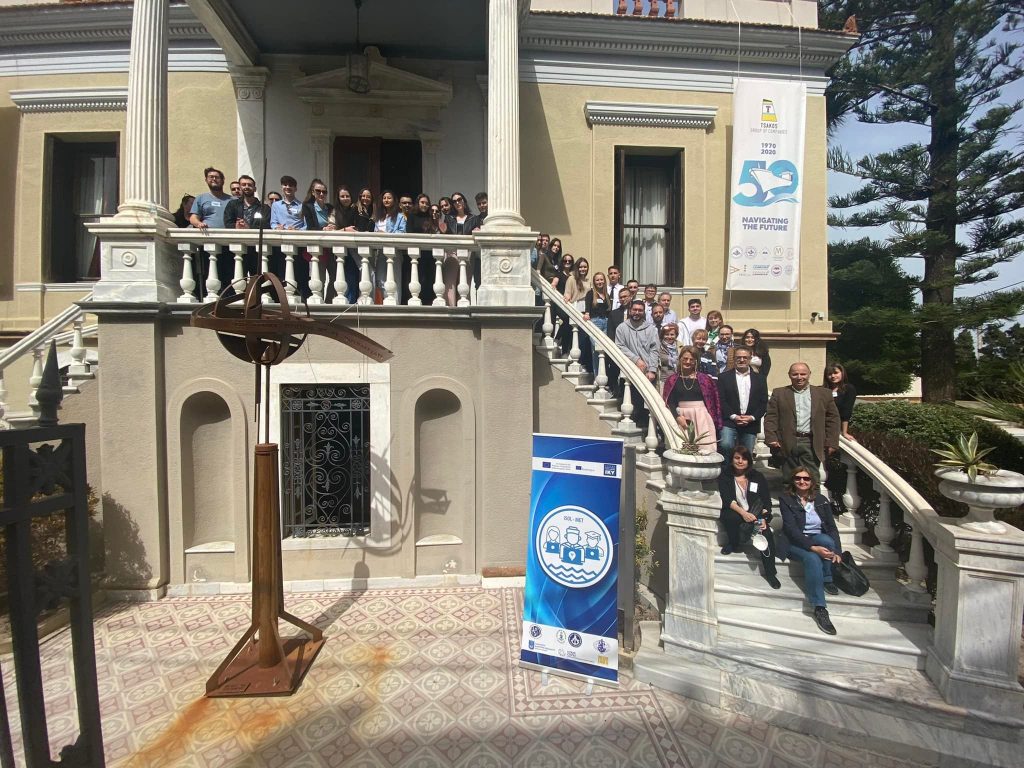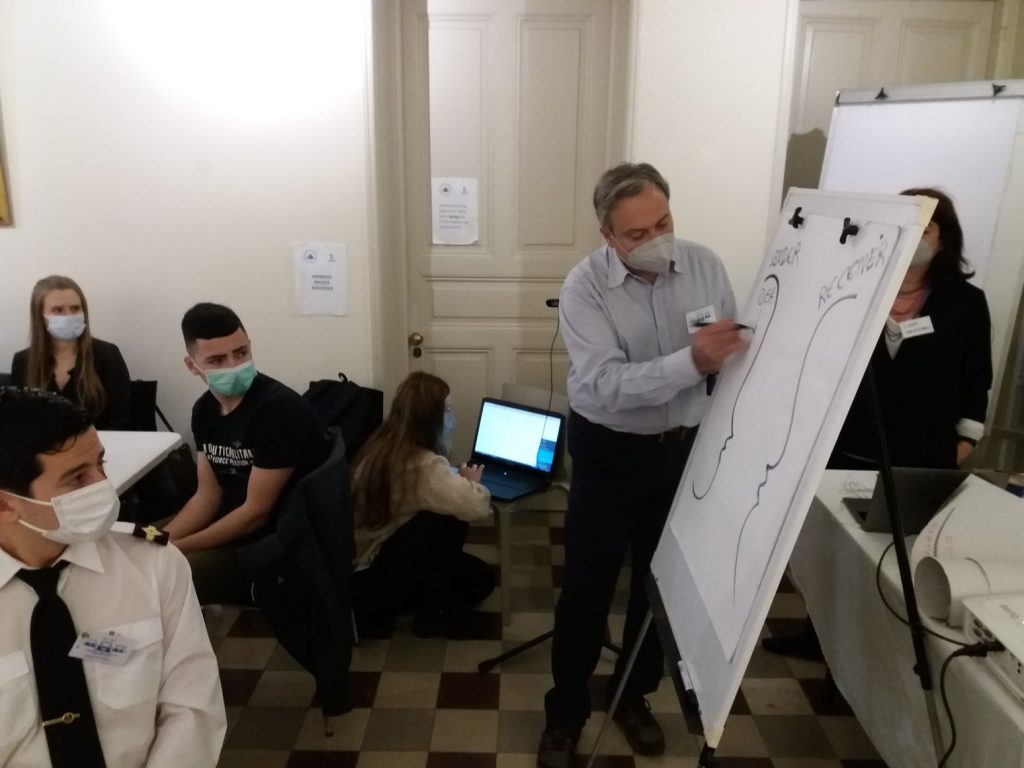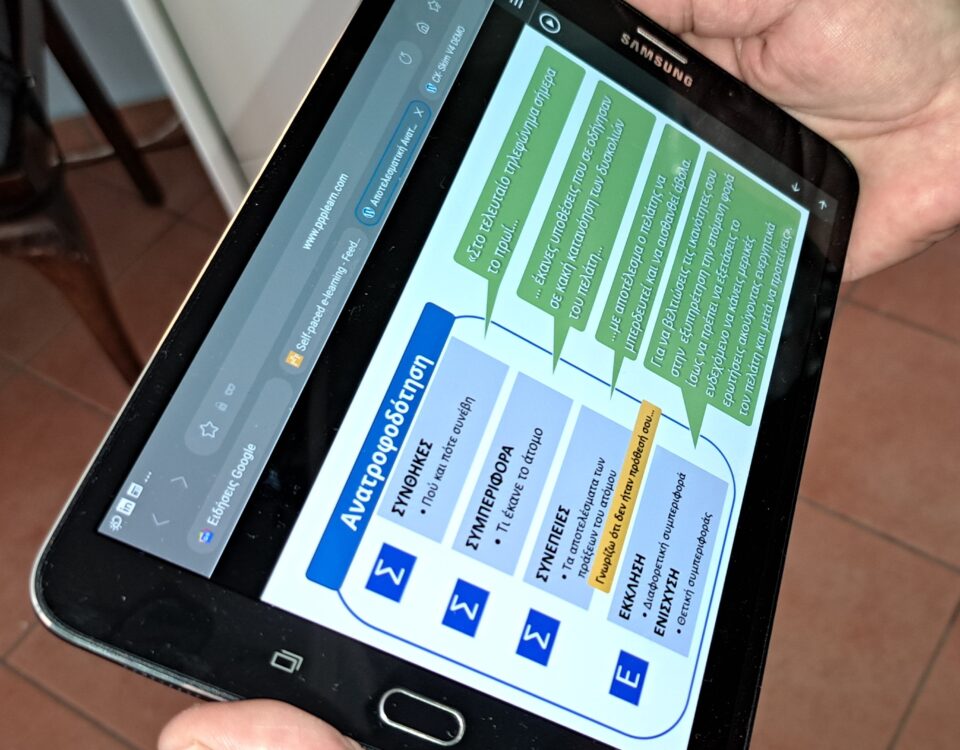Teaching soft skills is a challenge. It takes a lot of effort and investment to develop people skills like, communication, negotiation, conflict resolution, working with people of different culture, people management etc. Imagine now, what it takes to teach soft skills in an environment that is highly regulated and technically oriented, where even the introduction of the concept of soft skills is a challenge.
This is the case of maritime education and training.

But how easy is the
case-based teaching?
Case studies are an excellent tool to bring reality to classroom and help learners to understand and practice soft skills in the real world.
Traditional lecture versus case-based teaching
Traditional lecture versus case-based teaching differs because they are based on different underlying assumptions as to how students may attain these skills.
Assumptions in a lecture-based class are that students learn through seeing information on Power Point slides and listening to the instructor’s explanations. In those classes, we generally hear the instructor providing answers, taking apart the complex and simplifying it for the students, providing them with check figures and solutions to problems and requiring them to analyze little or none. This is a form of passive learning.

Traditional lecture
Traditional teaching depends upon the teacher transmitting the data in a clear and interesting manner. In a lecture class the professor is on the center stage. S/he does most of the talking, and provides most of the information and analysis. Students become stenographers. They try to write down as rapidly as they can the flow of data and interpretation flowing from the expert. At best, students make small role appearances to react to what the professor says.
A paradigm shift
| From …. | To…. |
| Lecture – mostly one way talking | Team working, multi point communication |
| Students as stenographers taking notes | Students contribute and drive the learning process |
| Professor is on the center stage, the expert with the “right” answers | Students occupy center stage, teacher’s role is as a “guide on the side”, a facilitator |
| Passive learning environment | Highly interactive learning environment. |
| Individual effort | Team effort, everybody contributes to learning |
| Stable learning path with choices about the quantity and scope of information made by the teacher | A dynamic learning path like a road map or a decision-making tree. Teacher plans, but students choose the road |
Case-based teaching
In case-based teaching we assume students learn best by practicing skills. For example we all learned to:
- Write by writing
- Think because we did not have answers given to us
- Reason through a problem because no one told us how to solve it
- Make decisions by making them and learning from them.
All these skills are practiced in a case-based class and the students are involved in their learning (an active learning environment).
It seems logical to assume that if students practice a skill, then they should be better at the skill at the end of the semester, than at the beginning. If they, did it repeatedly in many classes, they should improve greatly. That is how law schools are designed at Harvard and many other schools.
With case-based teaching, students occupy center stage, and teacher’s role is as a “guide on the side”—a production choreographer. Students are likely to construct a less linear highway to the day’s planned learning outcomes. Thus, you will benefit from practicing different planning strategies than you have when preparing a lecture.
The development of a lecture involves choices about the quantity and scope of information and analysis you will present. Notes for a case-based class look more like a road map or a decision-making tree. Preparation shifts from making decisions about articulating a perspective, to detailing a question strategy. This strategy will enable students to discover for themselves the content, arguments, and theories implicit in the case.
Case-based classes differ from traditional classroom experiences in the material used and the activity during the class setting. Case-based teaching places the student at the center of the educational process. Students matter. They are given significant responsibility for what and how they are learning.
Case teaching moves the professor from being the focal point of the class (the expert with the “right” answers) to a facilitator of the class. In this role as a guide, the students engage in discussion and formulate alternative solutions to questions posed by the instructor or other students.

Note: there are NO answers, NO check figures and Nο one in the room is perceived to be the expert in a case-based class.
Responsibility for learning is placed into the hands of the students, and learning is an interactive process.
Benefits
Case-based teaching grounds academic instruction in reality by engaging students in discussion of specific situations. Case-based teaching is learner centered, characterized by intense interaction between instructor and student as well as among students in a group. Conceptually, case teaching assumes that learning is more effective if students discover or construct knowledge with faculty guidance than if they sit passively and receive content from a distant “sage on the stage.” Just as a child learns to ride a bike by getting on it, students in a case-based course actively engage course material.
Case-based learning depends on inductive reasoning, making content the very foundation of a case course. It sharpens communication, teamworking and critical thinking skills as students apply knowledge and valuate options to solve the problem at hand. Students must listen carefully to each other, respect opinions of others, and work collectively to solve a problem. Thus, students learn to value the contribution of others while strengthening their own ability to think creatively and communicate effectively.
ISOL-MET Project a Case Study Initiative
There has been increasing research in the field of education documenting the effectiveness of case studies in learning, either as a substitute for or an enhancement of the primarily lecture-based courses that are still the usual fare in many universities. Indeed, research has consistently shown that active case-study learning is far more effective in teaching critical thinking than lectures.
Maritime education has been a field that has not embraced case-based classes. The method is not new to many fields, but we do not see it utilized in maritime education as we do in other disciplines.
The ISOL-MET Project is an initiative to explore how the case method can be creatively applied to teaching and developing soft skills in the classroom. Our basic case study narratives concern issues that arise in the contexts of our ships, our offices, and our maritime communities. We have been researching, writing, and refining case studies on topics ranging from diversity and growth mindset to a controversy over what is a leader onboard.
During the Chios Spring School, 3-10 of April, every partner has been experimented with many different methods of case-based teaching soft skills.
Our experience
Some case classes were full of energy and excitement and students learned a great deal.
Others could be dry and boring with no or little energy and excitement and students felt they were not learning anything. Some instructors thought they were supposed to “teach” the case, they gave all the “important” information to the students, and they led them down to the “right” path. Adapting this kind of case-based teaching, one would likely been disappointed with the case method. In that type of class, students become passive learners or listeners and are not actively involved in the learning process.
To produce a high-energy case-based class, it must be led with great questions that engage the students to think critically, take a stand, decide, and defend it. It is important that the students learn to mine the hidden jewels embedded in the case. They should discover new knowledge and skills or build and expand their current knowledge and skills. Learning becomes discovery rather than directive with the sharing of insights gained from thorough case preparation.


A good case for teaching soft skills presents the personality, cultural, and social facts of the problem, and requires students to grapple with the nuances of the situation. Either explicitly through role-playing, active reviewing, or implicitly through the questioning strategy of the instructor,. The student’s lens for the case is the very complicated vantage point of the investigator—and not the clean pages of the textbook.
Creating music

As a case teacher you take on the part of the orchestra conductor. The orchestra conductor knows what the music should sound like, so he brings in each instrument at just the right time to create the musical score. As a case teacher, you involve each student as you bring them in at the appropriate time by asking key questions and eliciting individual observations and analyses knowing the learning outcomes you wish the students to achieve. The orchestra conductor cannot make the music alone and the case teacher does not generate learning alone but is dependent on each student’s participation.
The metaphor
One might relate this as follows:
- The questions are the instruments.
- The students are the musicians.
- The orchestra leader must understand the instruments at a deep level.
- The leader must understand the way that the instrument (questions) can be planed (answered) and the sound that it can make (learning outcome that can be achieved).
- But the orchestra leader cannot play the instrument. The musician (student) must make the instrument work.
- That takes practice and a commitment to the orchestra.
- Remember to be a “guide” not an expert.
Much as a conductor creates music by coordinating individual performances, providing key signals, and knowing what the outcome should sound like, a case teacher generates learning by eliciting individual observations and analyses, asking key questions, and knowing what learning outcomes s/he wants students to achieve. And, just as the conductor cannot make orchestral music alone, the case teacher does not generate learning alone; each depends on individual as well as collective performances to achieve stated goals.
A case teacher resembles an orchestra conductor.
The questions are the instruments.
The students are the musicians.
As with a musical group, the conductor—the professor—is essential to achieving excellence. With case teaching, the teacher helps students work collectively through the material to understand it. Students are asked not only to learn the theory but also to apply it to the messiness of the real world. In the process, students learn facts because they are central to case analysis. They also acquire requisite life-long learning skills of analysis, communication and collaboration because they are necessary tools to unravel the puzzle that is the case.
Soft skills learning is a lifelong learning.
Case-based teaching almost never fail
Perhaps the most important thing you can do to prepare for a case class is to relax and get ready to enjoy yourself. Case teaching is fun. It is exciting to see where students want to take material, even if it is a bit off from where you were planning. It is wonderfully invigorating to see what your students can do intellectually without your handing it to them on a lecture platter. While you may have your ups and downs with a particular case, students generally love case work. Who does not like to be taken seriously, to be engaged in material as if they mattered? Think about what these students do most of their days—sit still and take notes. While your cases may not always do just what you hoped, they almost never fail.
May we choose to educate for a lifetime so we may have the leaders we need to move maritime industry forward. May we be willing to be a guide on the side and allow learning to flourish.





